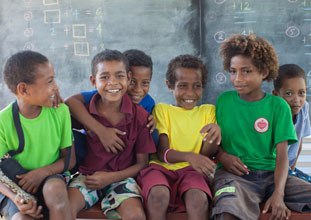Almost 18 million cases of COVID-19 have now been reported in India, as the country grapples with a widespread second wave of infection.
Since the emergence of the pandemic in India last year, COVID-19 has significantly impacted on children’s health, created new protection threats, and disrupted access to education.
This week, official tallies report that more than 200,000 people have now lost their lives to the disease, however experts warn that this is likely a significant underestimation, with many families unable to access medical care as hospitals are overwhelmed with patients.
Rates of infection means India now accounts for around 38% of all recently confirmed COVID-19 cases in the world, the highest share reached by an individual country since the early stages of the pandemic.
ChildFund India country director Neelam Makhijani says: “The second wave of the pandemic is having a brutal impact on most states in India.
“The new surge has nearly crippled the medical infrastructure, resulting in shortages of hospital beds, oxygen, and other critical medical supplies. Many regions have been forced to implement weekly lockdowns and night curfews, including Delhi, Maharashtra, Karnataka, and Odisha.”
While India has begun its COVID-19 immunisation rollout, with over 14m residents having received either one or both doses of the vaccine, this preventative measure has been unable to keep pace with the soaring rates of infection.
From 1 May, anyone aged over 18 years will be eligible for vaccination, but in the meantime the outbreak remains out of control, with the Indian Government’s Union Health Ministry reporting more than 300,000 cases in the 24 hours to 28 April.
ChildFund India currently implements child-focused development programs in both urban and rural settings. It is now providing emergency assistance to communities, including:
- increasing awareness about COVID-19 prevention behaviours in communities, and distributing hygiene kits;
- providing frontline workers in rural areas with essential personal protective equipment;
- working in partnership with government agencies to support the vaccine rollout process;
- ensuring the most vulnerable children and families have access to food and psychological support; and
- distributing educational materials for children who are prevented from attending school due to lockdown measures, and who do not have access to online resources.
Ms Makhijani says: “As India continues the fight against the COVID-19 pandemic, the isolation, lockdown, and suppressed economic activity is hurting families around the country, adversely impacting the most disadvantaged communities.
“Through our response efforts to date, ChildFund has supported over 4 million people across the country, and will continue to deliver relief efforts to support vulnerable children and their families.”
You can support children and families by making a donation to ChildFund’s global COVID-19 crisis appeal, which is supporting vulnerable communities around the globe.








